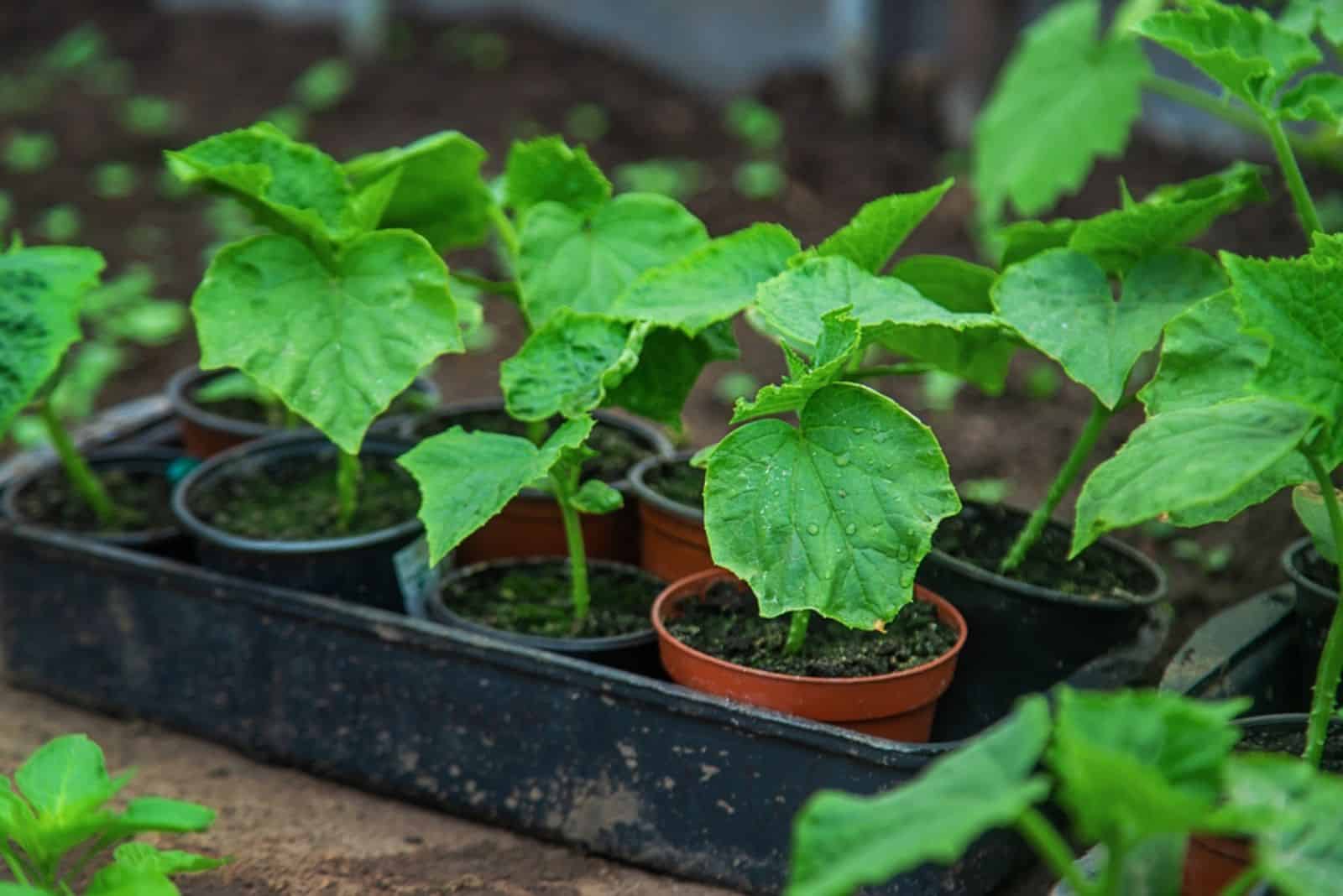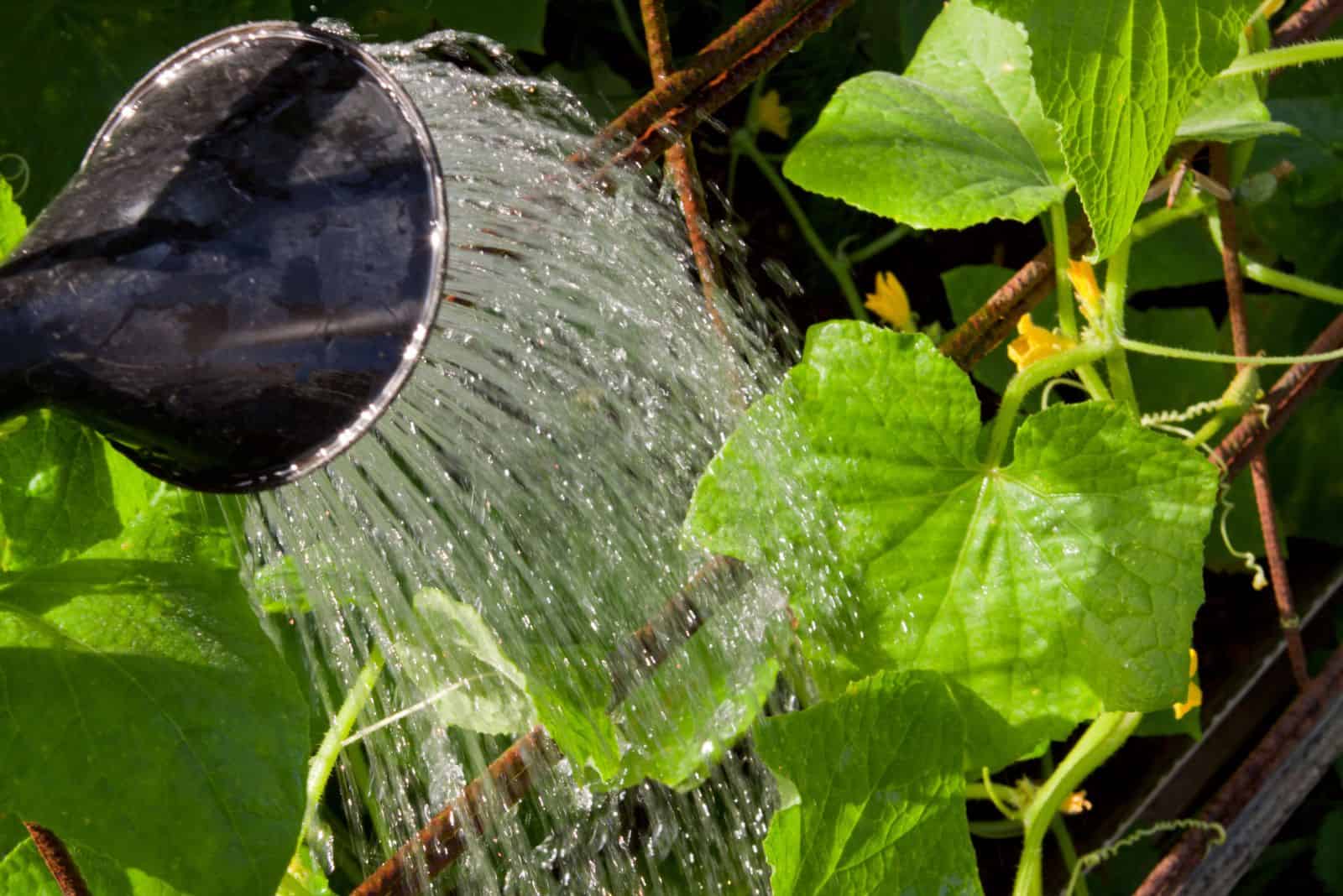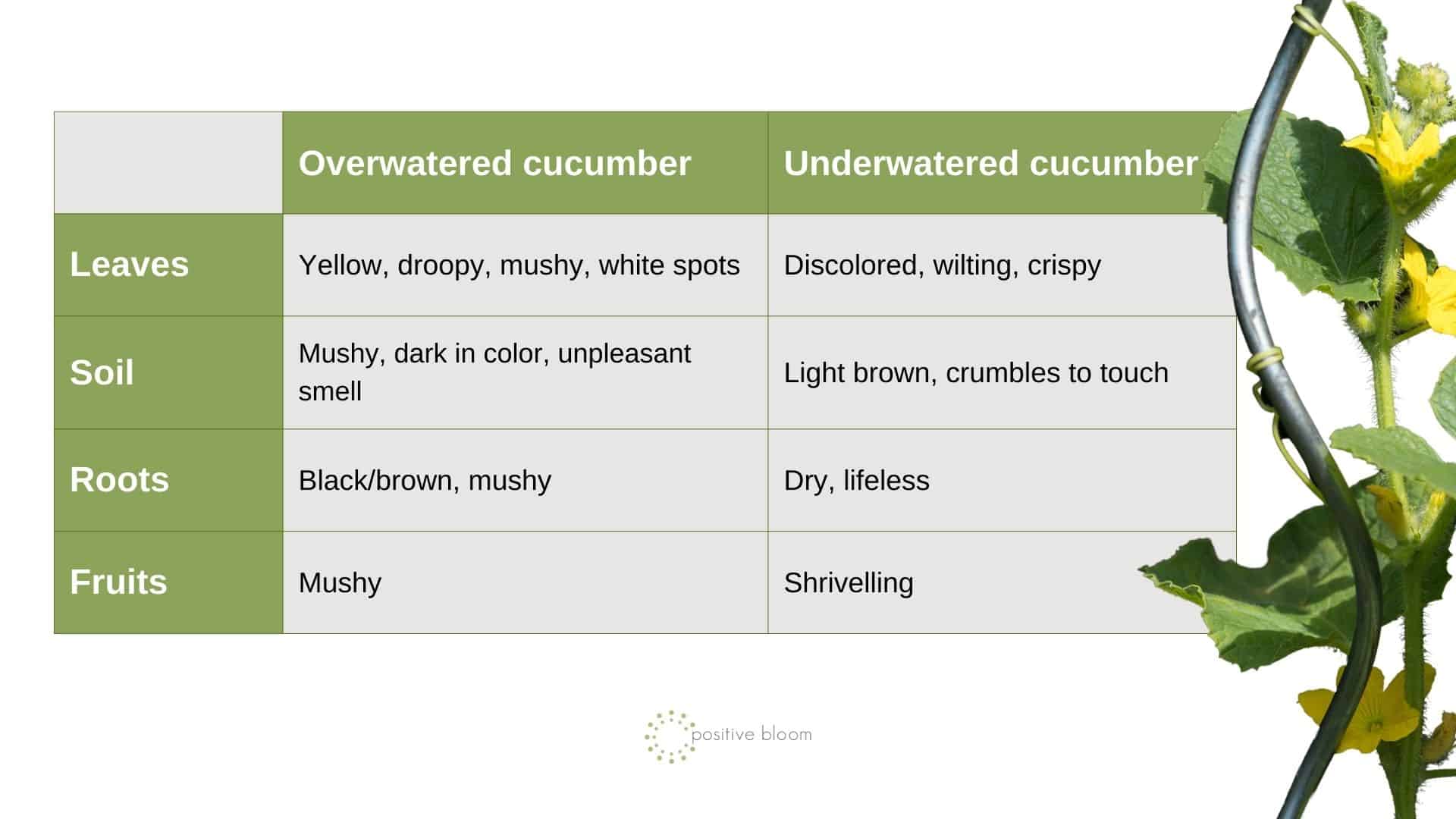Growing cucumbers is fun and relatively problem free during cultivation. The trickiest part is irrigation, i.e., the frequency and amount of water this veggie needs.
In this article, I’ll tell you more about cucumber watering needs and how they differ depending on the plant’s growth stage.
It’s also essential to discuss how to recognize a cucumber that’s either receiving too much water or is severely dehydrated.
Watering Needs Of Cucumber Seedlings
After seed sowing and germination, cucumbers enter the seedling stage, which is when new growth occurs.
As soon as certain plant species display new growth, their watering and fertilizing needs change. Their watering needs also vary depending on the growing conditions or if you cultivate the seedlings in containers or in the ground.
Let’s get into details!
How Often To Water Seedlings Grown Indoors
Starting cucumbers indoors is an excellent way to get healthy plants. During this growth stage, the soil needs to be moist because roots need water to develop further.
The main problem is that it’s easy to overwater the seedlings of cucumber plants. Growers often make mistakes and allow water to accumulate in the soil instead of letting it dry out a little bit.
Seedlings grown indoors typically don’t receive as much direct sunlight as they would if kept outdoors. This means the water from the soil has a lower evaporation rate, which results in lower watering needs.
Check the soil of seedlings grown indoors every day and mist them lightly whenever it feels dry. With this method, you’ll avoid waterlogging and the roots will still have enough moisture to absorb.
Water Needs Of Seedlings Grown In Containers Outdoors
If you don’t have an outdoor garden, or simply decide to grow cucumbers in containers, you’ll need to harden the seedlings.
Cucumber seedlings need a lot of light and you can’t simply take the container outside and leave it there permanently. You need to introduce your seedlings to more light gradually. (1)
Remember that potted cucumbers need less water than those planted in-ground because we provide them with moisture.
The best way to avoid waterlogging and dehydration is by checking the soil every day and lightly misting it if it feels dry.
Watering In-ground Cucumber Seedlings
If you live in USDA hardiness zones 4 and above, you can sow cucumber seeds directly in the ground. The essential thing is to find a spot where your cucumbers can receive at least 6 hours of direct sun each day.
Once your cucumber displays new growth, it will need about an inch of water each week. Remember that these veggies may require more water if temperatures are very high.
One of the best ways to ensure enough moisture for in-ground cucumber seedlings is to add a layer of mulch to the soil when the seedlings are about 4 inches tall. This method is also known as a moisture trap, and keeps the site weed-free.
How Often To Water During The Active Growth Period
The cucumber growth stages after seedling emergence are flowering and fruiting. Plants need a lot of water to produce fruit, but the growing conditions also dictate their needs.
Let’s look at how to water cucumbers in containers and in-ground.
Watering Schedule For Potted Cucumbers
The great thing about growing cucumbers in containers is that you can control their growing conditions, i.e., regulate light, humidity, and temperature.
Remember that your potted cucumbers won’t have any water until you provide them with it. This means regular inspection is very important.
Stick your finger or a wooden stick in the cucumber soil to check moisture levels. If the soil is about half an inch dry below the surface, you can proceed with irrigation.
Pay attention to all the growing conditions and adjust the watering schedule accordingly. For instance, if temperatures are higher than 85 degrees Fahrenheit, you’ll need to water more frequently.
Cucumbers don’t like having soggy roots, so you should never allow the soil to become waterlogged. You should also avoid getting water on the leaves because it can attract airborne fungal diseases. White spots on cucumber leaves are a result of powdery mildew disease. (2)
Containers for cucumbers should have drainage holes in the bottom to allow excess water to come out.
Water Needs Of Established Plants Grown In-ground
When plants are started in-ground, their watering needs are lower since the roots can absorb moisture from the ground.
Generally speaking, you need to water your in-ground cucumbers every three days during the growing season.
Cucumbers will need more water during hot days and less water in rainy areas. When watering, avoid getting water on the leaves (aim for the soil).
One of the best ways to ensure enough water for cucumbers while avoiding wetting the leaves is by using a drip irrigation system.
Here’s a video with some tips on growing and watering cukes:
Overwatered vs Underwatered Cucumber
When cucumber leaves start turning yellow, watering is the issue in most cases. Other changes can occur if irrigation isn’t correct, and it’s often hard to tell if you’re dealing with an overwatered or an underwatered cucumber plant.
Here’s a table that can help you determine if your cukes have too much or are lacking water.
Wrapping Up
Plant irrigation is a nightmare for many growers. There’s always that moment of fear that you’ve given either too much or not enough water.
Cucumber watering needs are moderate, but they differ depending on the growth stage of the plant, and growing conditions such as light, temperature, and humidity.
Use our tips for watering cukes, and you’ll get healthy plants and delicious fruit in no time!
Until next time!
References
1. Hardening Off Vegetable Seedlings for the Home Garden | University of Maryland Extension. (n.d.). University of Maryland Extension.
2. Hacquard, S. (2014). The Genomics of Powdery Mildew Fungi: Past Achievements, Present Status and Future Prospects. Advances in Botanical Research




